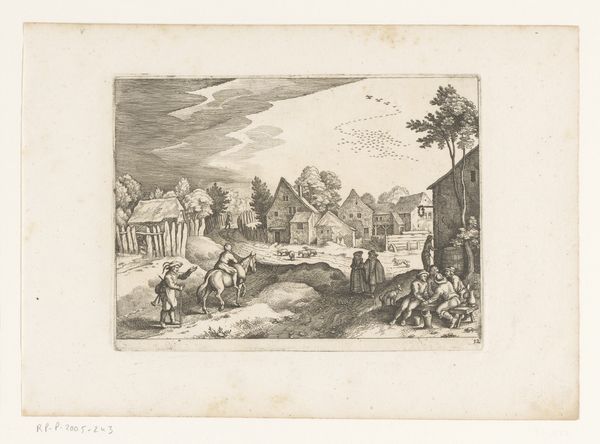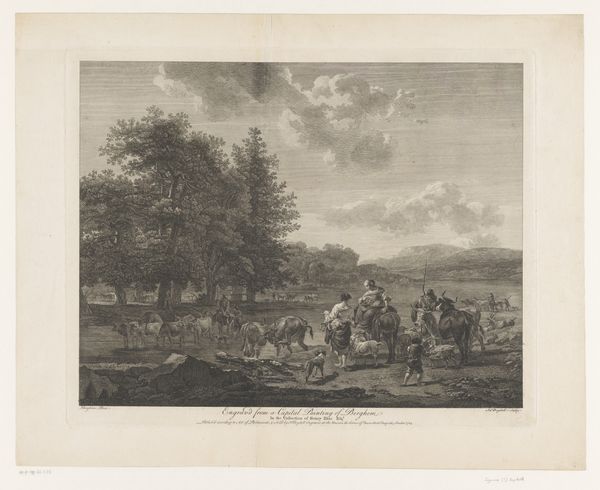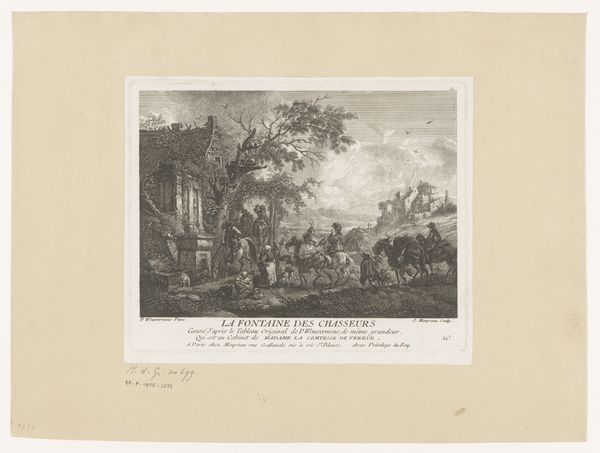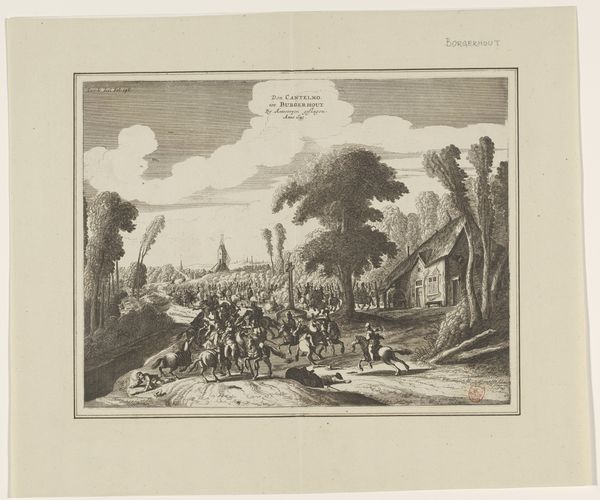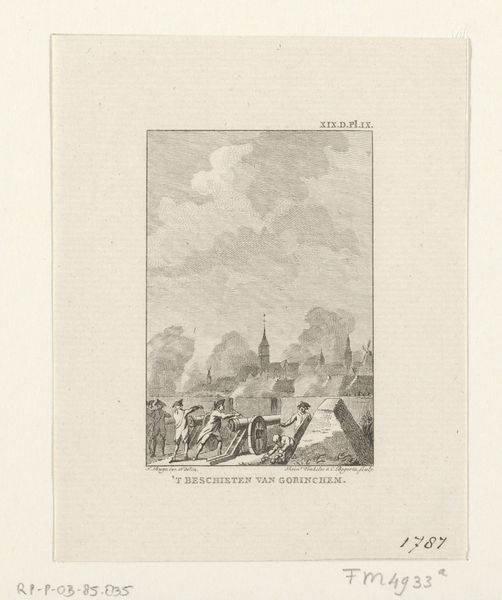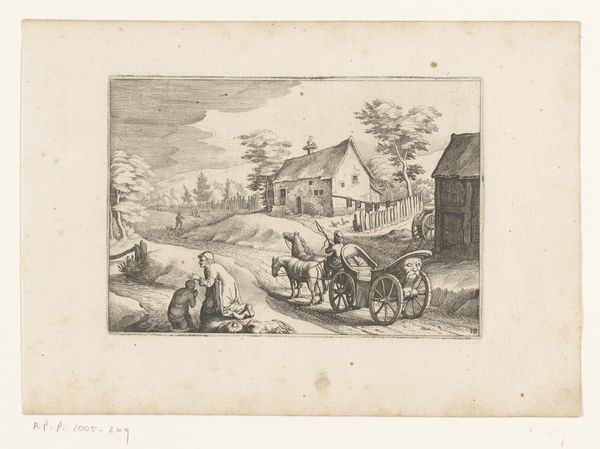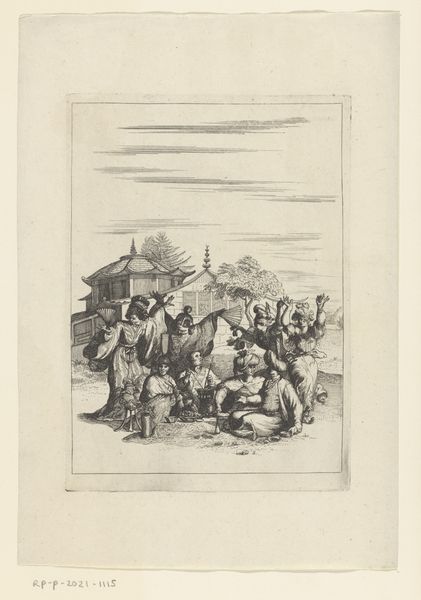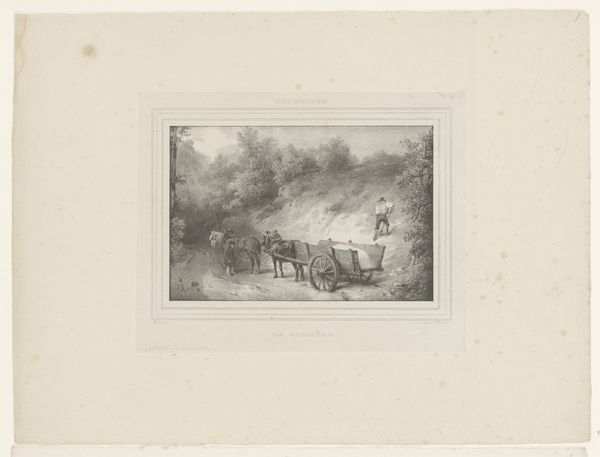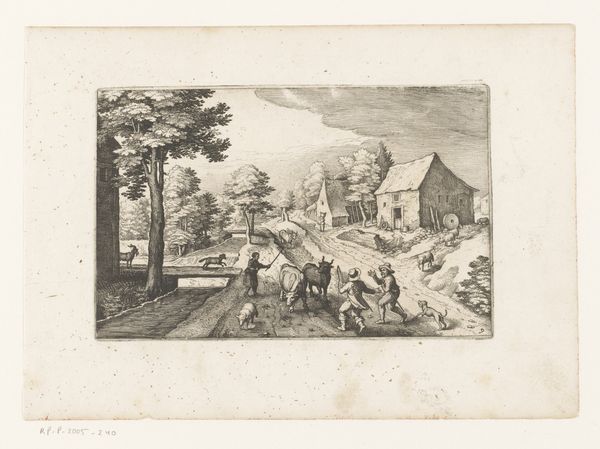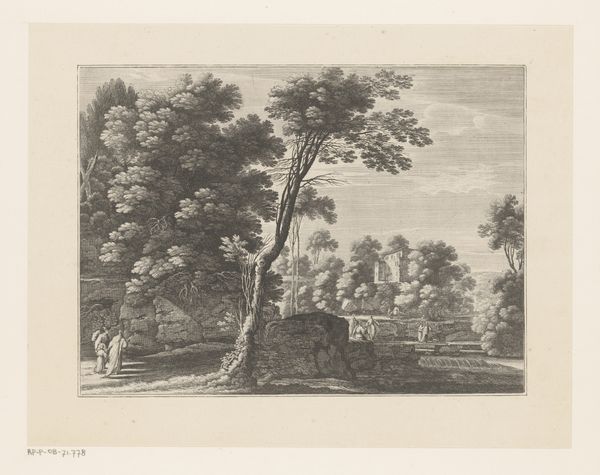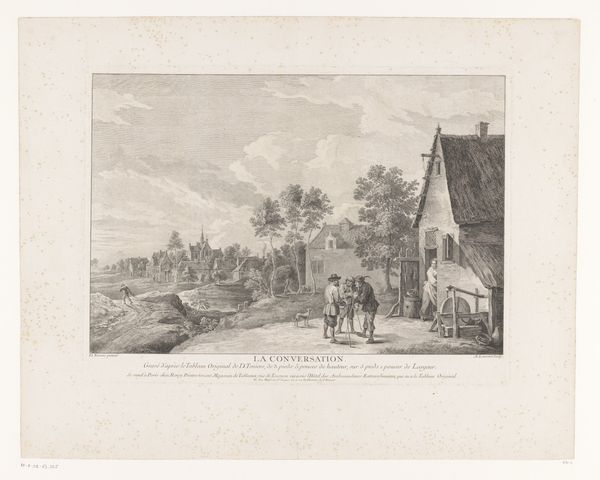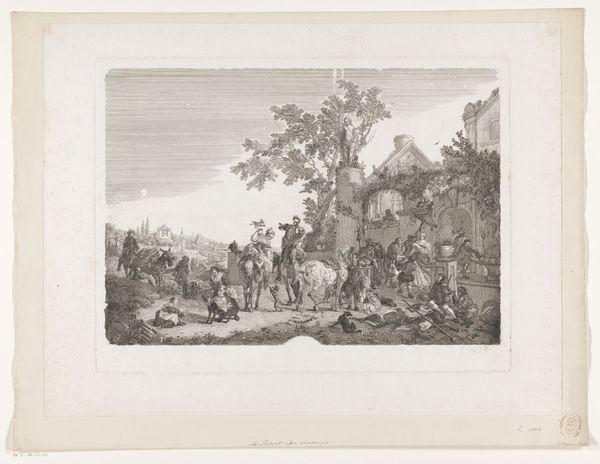
print, etching, engraving
#
baroque
# print
#
etching
#
landscape
#
genre-painting
#
engraving
Dimensions: height 223 mm, width 159 mm
Copyright: Rijks Museum: Open Domain
Editor: This etching, "Twee mannen repareren een ploeg" by Philipp Jacques Loutherbourg, dating from around 1708 to 1768, presents a rural scene. The tones are muted and it evokes a sense of everyday labor. How do you interpret the narrative and significance of this depiction of agricultural work? Curator: This image provides us with a fascinating glimpse into the social dynamics of 18th-century labor. The men repairing the plow are not just engaging in a simple task; they're maintaining a system that, while seemingly bucolic, is deeply embedded in power structures. Who owns the land they till? What are the conditions of their labor? This work invites us to consider the intersection of class, land ownership, and the romanticized, yet often harsh, reality of rural life. Look at the livestock and how they figure into the broader image of the era’s socio-economic circumstances. Editor: I hadn't considered the power dynamics so explicitly. I was more focused on the seeming tranquility of the landscape itself. Curator: Exactly, and that's part of the artistry, isn't it? The artist presents a picturesque scene, but beneath the surface lies a complex web of social relations. It prompts us to question how labor is represented and whose perspectives are privileged in artistic depictions. The landscape, then, becomes a stage upon which these inequalities are enacted and, perhaps, subtly challenged. It invites questions of representation: Who has the power to represent whom, and to what end? Editor: So, by looking at what is seemingly a simple genre scene, we can unpack larger questions of social justice and representation in art? Curator: Precisely. And that's the beauty of art history – it's never just about aesthetics, it's about understanding the world we inhabit. Editor: This makes me see it in a completely different light, like an entry point into a broader understanding of the era. Curator: Indeed. It reveals that art, even in its most seemingly benign forms, can be a powerful tool for social commentary.
Comments
No comments
Be the first to comment and join the conversation on the ultimate creative platform.
